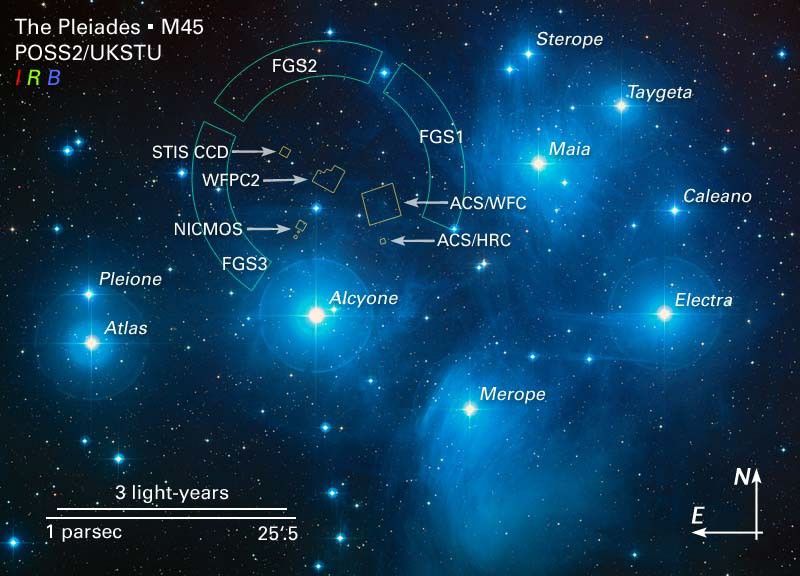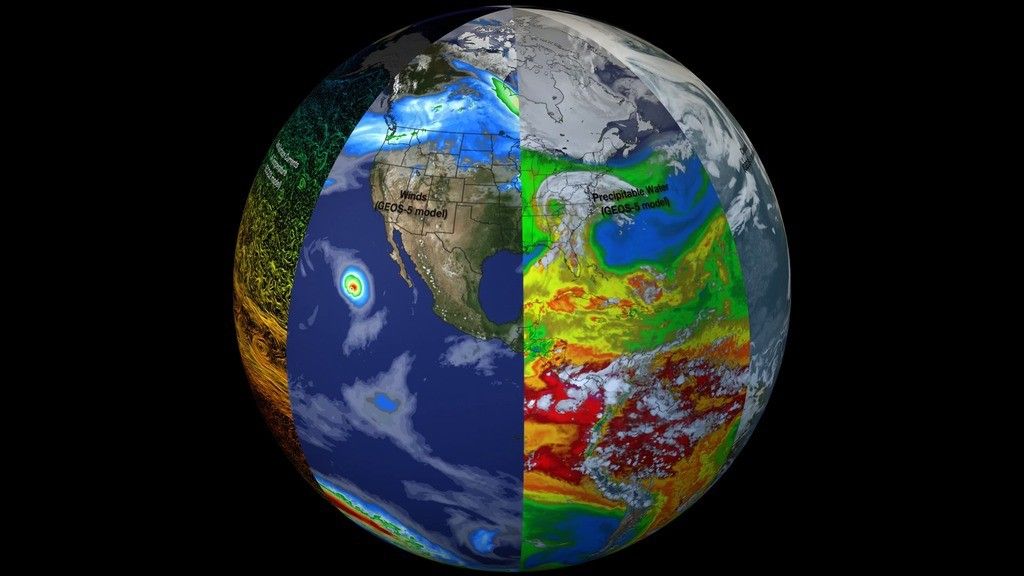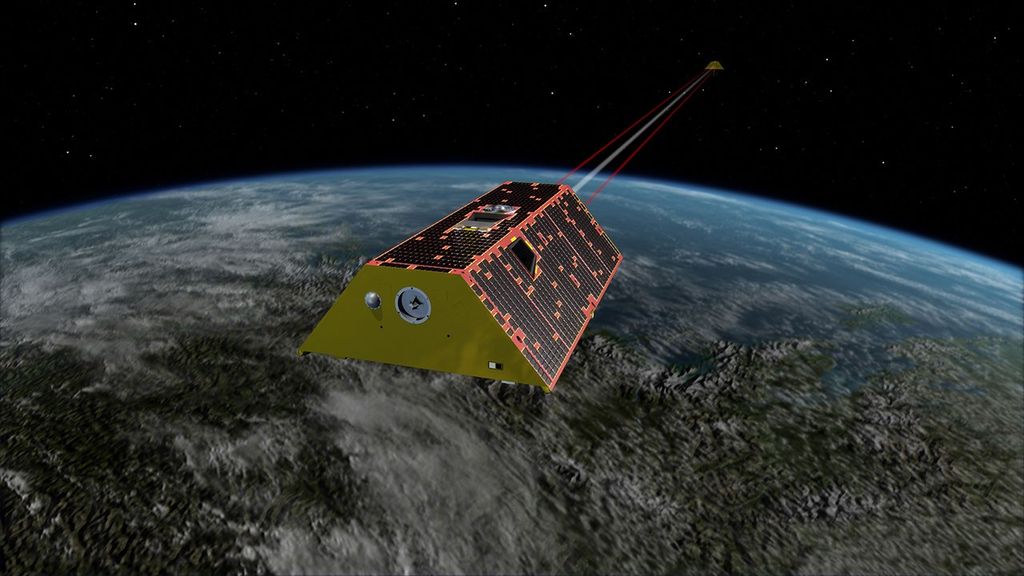1 min read
Annotated Image of the Pleiades and HST Field of View

About the Object
- R.A. PositionR.A. PositionRight ascension – analogous to longitude – is one component of an object's position.03h 46m 59.99s
- Dec. PositionDec. PositionDeclination – analogous to latitude – is one component of an object's position.24° 7' 0.0"
- ConstellationConstellationOne of 88 recognized regions of the celestial sphere in which the object appears.Taurus
- DistanceDistanceThe physical distance from Earth to the astronomical object. Distances within our solar system are usually measured in Astronomical Units (AU). Distances between stars are usually measured in light-years. Interstellar distances can also be measured in parsecs.Approximately 400 light-years (120 parsecs)
About the Data
- Data DescriptionData DescriptionProposal: A description of the observations, their scientific justification, and the links to the data available in the science archive.
Science Team: The astronomers who planned the observations and analyzed the data. "PI" refers to the Principal Investigator. - InstrumentInstrumentThe science instrument used to produce the data.HST>FGS
- FiltersFiltersThe camera filters that were used in the science observations.Second Palomar Observatory Sky Survey (POSS2)/UKSTU (B), (R), and (I)
- Object NameObject NameA name or catalog number that astronomers use to identify an astronomical object.Pleiades, NGC 1432/35, M45
- Object DescriptionObject DescriptionThe type of astronomical object.Open Cluster
- Release DateJune 1, 2004
- Science ReleaseHubble Refines Distance to Pleiades Star Cluster
- Credit

Color Info
Color InfoA brief description of the methods used to convert telescope data into the color image being presented.
Blue: POSS2/UKSTU (B) Green: POSS2/UKSTU (R) Red: POSS2/UKSTU (I)

Compass and Scale
Compass and ScaleAn astronomical image with a scale that shows how large an object is on the sky, a compass that shows how the object is oriented on the sky, and the filters with which the image was made.
Related Images & Videos

Hubble Refines Distance to the Pleiades Star Cluster
The brilliant stars seen in this image are members of the popular open star cluster known as the Pleiades, or Seven Sisters. The Hubble Space Telescope's Fine Guidance Sensors refined the distance to the Pleiades at about 440 light-years. The Fine Guidance Sensors are at the...
Share
Details
Last Updated
Aug 17, 2025
Contact
Media
Claire Andreoli
NASA’s Goddard Space Flight Center
Greenbelt, Maryland
claire.andreoli@nasa.gov


































